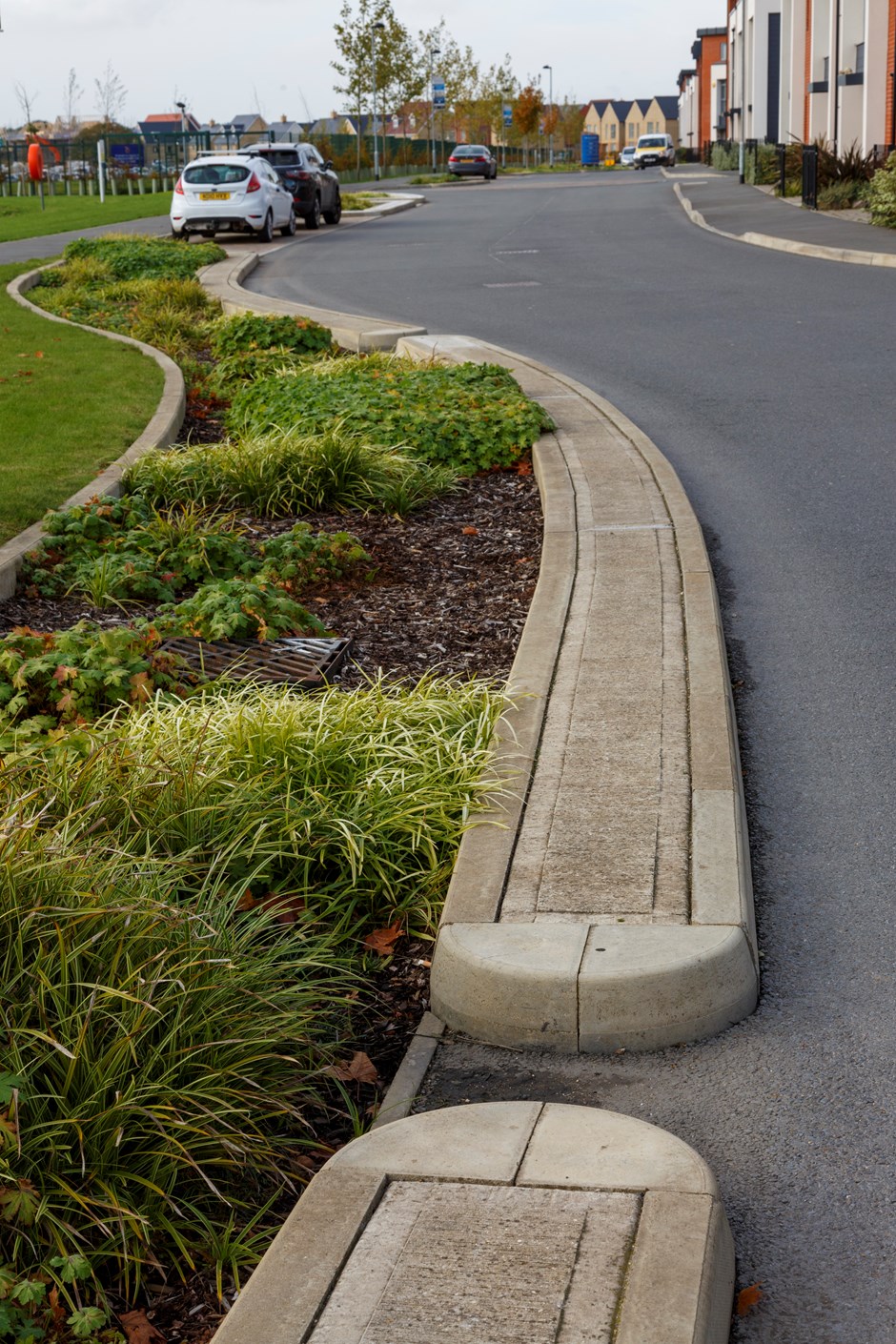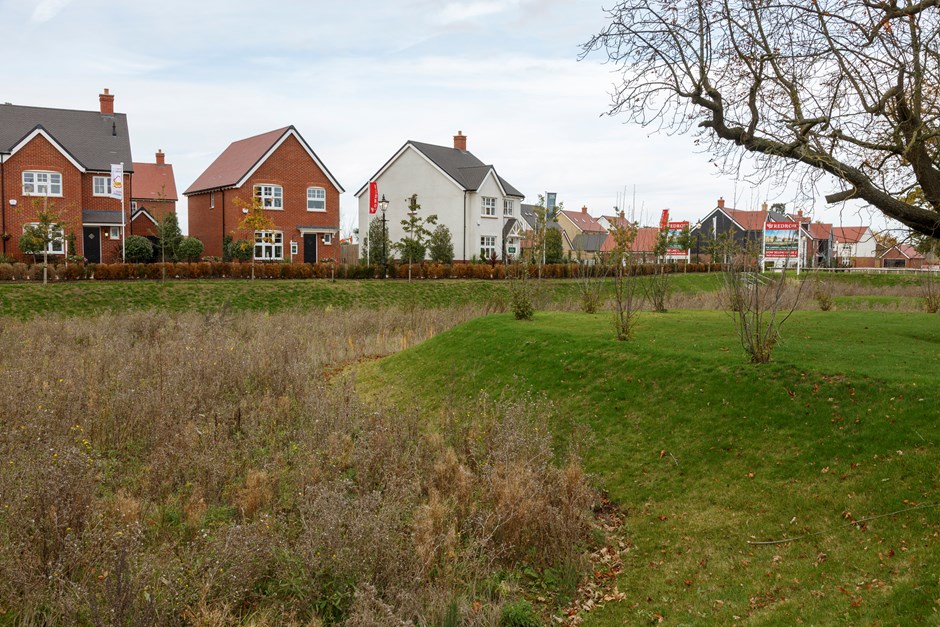Water Quality
All surface water should go through stringent treatment in order to protect water sources and biodiversity.
| What the LLFA expect to see At the outline application stage, it should be shown that consideration has been given to water quality. This can be shown by discussing the potential options in treatment, and how this will tie in with the scheme. At the full application stage and at discharge of conditions it is expected that the simple index approach is used to ensure that there is sufficient treatment for the site. This should be shown by the hazard pollution level indices and the mitigation indices that the features used provide. |
The level of pollution found within surface water runoff will depend on the nature of the development from which it arises, the time since the last rainfall event, and the duration and intensity of rainfall. An appropriate ‘train’ of SuDS components should be installed to reduce the risk of pollutants entering watercourses and groundwater. The suitability of different SuDS components within a well-designed treatment train can be found within table 26.7 of The CIRIA SuDS Manual C753. This should incorporate treatment from all sources of pollution, including rooftops. A well planned, and designed SuDS network can be cost effective when the appropriate conveyance, infiltration, and attenuation work harmoniously with surface water treatment.
Interception storage should be utilised as part of the beginning of the treatment train to ensure that pollutants are managed as close to the source as possible. In addition to this sediment should be removed as far upstream in the system as possible. Doing so provides the important removal of a range of contaminants that are adsorbed onto sediment surfaces and at the same time protects downstream components from damage or poor performance due to sediment built-up. When selecting features, it is important to minimise the risk of remobilisation of, and washout of any pollutants such as sediments. Although some gullypots and catchpits can trap sediment, their performance is linked closely to the regularity of their maintenance. There is a significant risk of pollutants contained within them being dislodged and washed downstream; and hence the LLFA do not consider these an appropriate form of treatment.
A SuDS system can employ a myriad of processes in order to treat surface water, for example: infiltration, sedimentation, filtration, adsorption, biodegradation, oxidisation, reduction, or separation. These processes are strongly linked to the hydraulic control of runoff i.e. the velocity control and the retention time. However, with these processes’ biodiversity is a sensitive contributing factor and therefore polluted surface water runoff should not run directly into permanent ponds in order to protect biodiversity and amenity, and to prevent maintenance problems caused by heavy silts and oil.
Chapter 26 of the CIRIA SuDS Manual C753 offers a range of different features and their treatment values through it’s Simple Index Approach. To measure and mitigate the potential pollution hazard risk that certain surfaces give, the LLFA expect all sites to follow the Simple Index Approach to demonstrate that appropriate treatment is applied to mitigate the impact of new development. This includes Highway development. HAWRAT (Highways Agency Water Risk Assessment Tool) is not considered robust enough and may allow increased pollutant flows into a receiving watercourse, which is contrary to paragraph 174 of the NPPF. When submitting an application, it is necessary to demonstrate that the pollution hazard impact indices being created by the development, are offset by the pollution hazard mitigation indices that the proposed SuDS scheme offers. In addition, when assessing the pollution hazard level, the LLFA recommend that the national trip analysis, which suggests that an average of 5 traffic movements per day per dwelling is used unless a more specific transport risk assessment can be provided. When proprietary systems are proposed (such as vortex separators) the LLFA expect details about the level of mitigation provided to be consistent with the Simple Index Approach.
The potential pollution hazard indices and the SuDS features mitigations indices stated within Tables 26.2, 26.3, and 26.4 from the CIRIA SuDS Manual C753 can be seen below.
Pollution hazard indices for different land use classifications table
| Land use | Pollution hazard level |
Total suspended solids (TSS) |
Metals | Hydrocarbons |
| Residential roofs | Very low | 0.2 | 0.2 | 0.05 |
| Other roofs (typically commercial/industrial roofs) | Low | 0.3 | 0.2 (up to 0.8 where there is potential for metals to leach from the roof) |
0.05 |
| Individual property driveways, residential car parks, low traffic roads (e.g. cul de sacs, home zones and general access roads) and non-residential car parking with infrequent change (e.g. schools, offices) i.e. <300 traffic movements/day |
Low | 0.5 | 0.4 | 0.4 |
| Commercial yard and delivery areas, non-residential car parking with frequent change (e.g. hospitals, retail) all roads except low traffic roads and trunk roads/motorways, and roads that have more than 300 traffic movements daily |
Medium | 0.7 | 0.6 | 0.7 |
| Sites with heavy pollution (e.g. haulage yards, lorry parks, highly frequented lorry approaches to industrial estates, waste sites), sites where chemicals and fuels (other than domestic fuel oil) are to be delivered, handled, stored, used or manufactured; industrial sites; trunk roads and motorways |
High | 0.8 | 0.8 | 0.9 |
- Motorways and trunk roads should follow the guidance and risk assessment process set out in the Highways Agency (2009).
- Where a site land use falls outside the defined categories, the indices should be adapted (and agreed with the LLFA) or else the more detailed risk assessment should be adopted.
Indicative SuDS mitigation indices for discharges to surface waters table
| Mitigation indices | |||
|---|---|---|---|
| Types of SuDS component | TSS | Metals | Hydrocarbons |
| Filter strip | 0.4 | 0.4 | 0.5 |
| Filter drain | 0.4 | 0.4 | 0.4 |
| Swale | 0.5 | 0.6 | 0.6 |
| Bioretention system | 0.8 | 0.8 | 0.8 |
| Permeable paving | 0.7 | 0.6 | 0.7 |
| Detention basin | 0.5 | 0.5 | 0.6 |
| Pond | 0.7 | 0.7 | 0.5 |
| Wetland | 0.8 | 0.8 | 0.8 |
- SuDS components only deliver these indices if they follow design guidance with respect to hydraulics and treatment set out in this guide and the CIRIA SuDS Manual C753.
- Filter drains can remove coarse sediments, but their use for this purpose will have significant implications with respect to maintenance requirements and this should be taken into account in the design and maintenance plan.
- Ponds and Wetlands can remove coarse sediments, but their use for this purpose will have significant implications with respect to the maintenance requirements and amenity value of the system. Sediment should normally be removed upstream, unless they are specifically designed to retain sediment in a separate part of the component, where it cannot easily migrate to the main body of water.
- Where a wetland is not specifically designed to provide significantly enhance treatment it should be considered as having the same mitigation indices as a pond.
For more information regarding the simple index approach and surface water treatment please see chapter 26 of the CIRIA SuDS Manual C753.
Page updated: 22/10/2021

